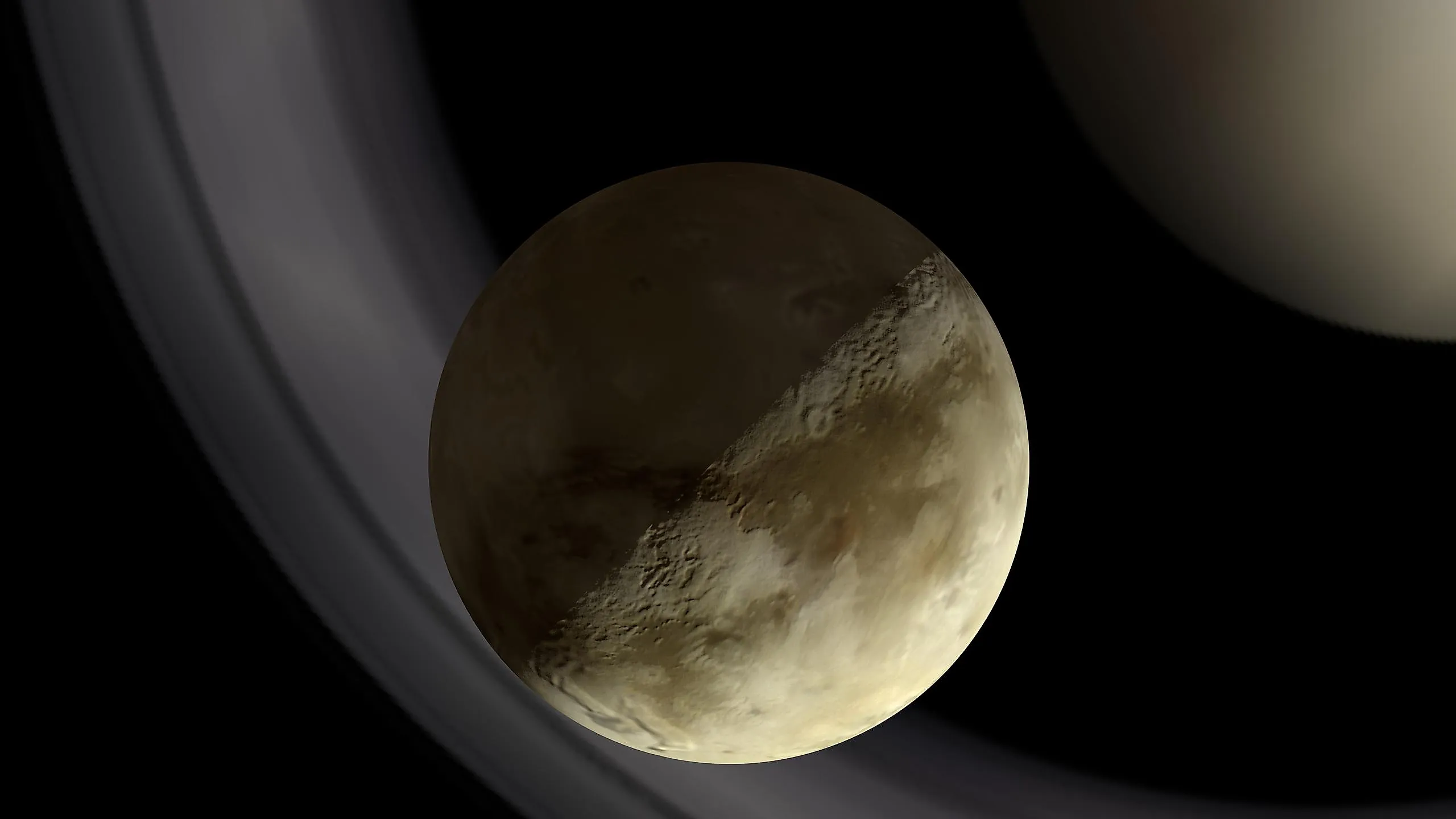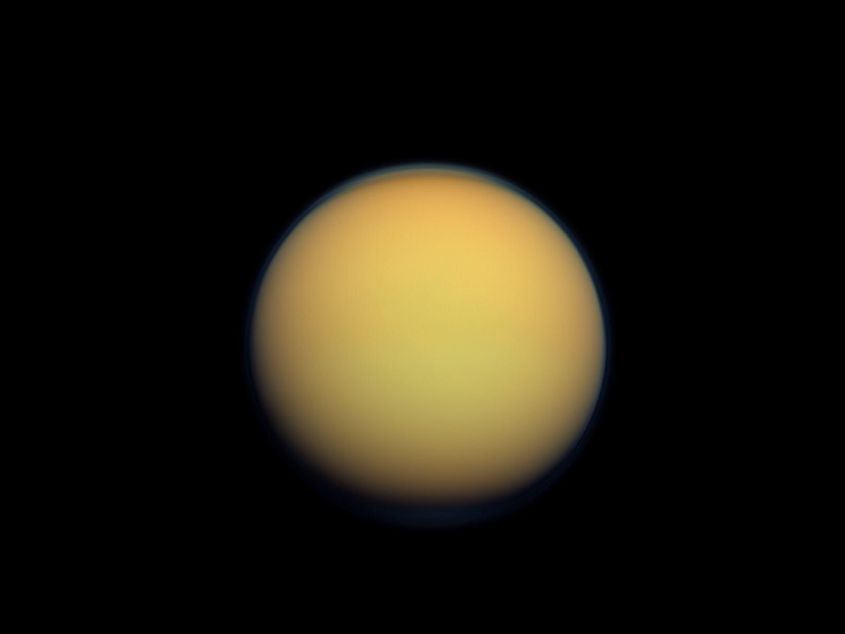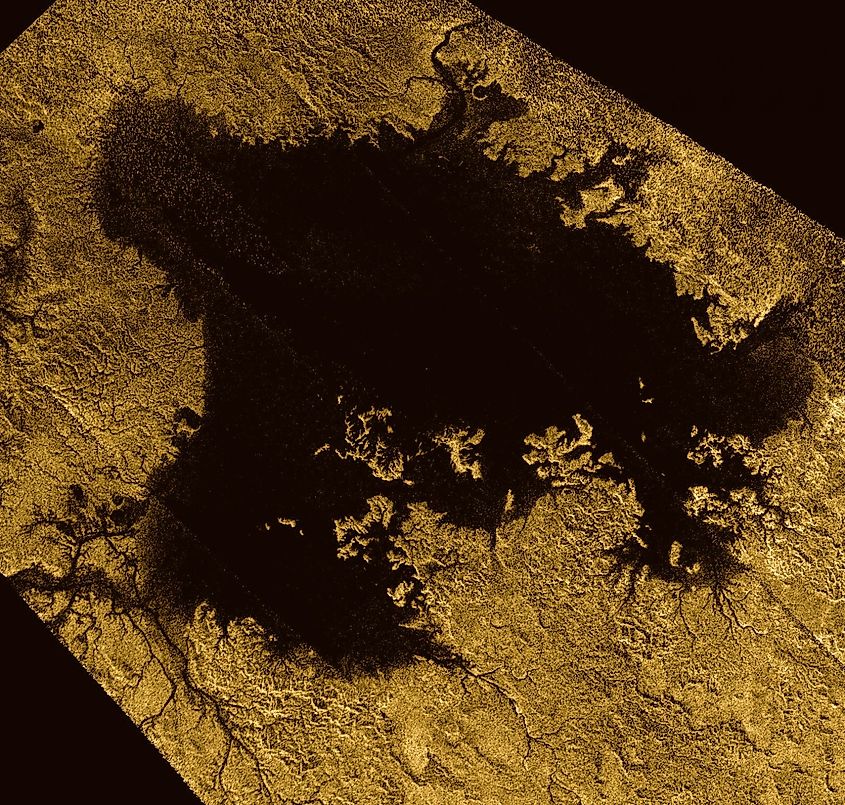
Can Life Exist On Saturn’s Moon, Titan?
Titan is the largest moon of Saturn and the second-largest moon in the solar system. Having a diameter of 1,600 miles (2,575 kilometers), Titan is even larger than the planet Mercury. Titan is among the most unique and intriguing moons in the solar system. Unlike every other moon in the solar system, Titan is blanketed in a dense atmosphere that is even denser than Earth’s. Dense atmospheres are rare for moons, and so the atmosphere of Titan is rather strange. Moons have low gravity due to their small mass, so they generally cannot hold onto much of an atmosphere. Titan, however, has an atmosphere thicker than Earth’s, despite being only a fraction of the mass. Titan’s atmosphere is primarily composed of methane and ethane, which happen to be pretty dense hydrocarbons. Surface temperatures on Titan average at minus 292 degrees Fahrenheit (minus 180 degrees Celsius), so the hydrocarbons in Titan’s atmosphere become so dense that they stick to Titan, maintaining its atmosphere for billions of years. Titan’s atmosphere is only one aspect that makes this moon so interesting. Radar views of the surface, along with a successful probe that landed on the surface in 2005, have revealed a surface remarkably similar to the Earth’s, with evidence confirming that Titan is home to lakes, seas, and rivers. However, unlike on Earth, these liquid bodies do not contain water. Instead, the frigid temperatures on Titan allow methane and ethane to condense into liquid form. On Titan, the seas are filled with liquid hydrocarbons. It even rains methane on Titan. Titan is the only other world in the solar system where it rains. The presence of liquid on Titan’s surface raises an interesting question: could life exist on Titan?
The Conditions For Life

For life to start and evolve, three factors must be met: an energy source, organic chemistry, and a solvent. The existence of organic compounds provides the right chemicals for life, while an energy source can kickstart and maintain chemical reactions. A solvent, such as water, is required for the chemical reactions to occur. Titan contains an abundance of organic compounds, and the moon is likely home to hydrothermal vents. Titan has the right chemistry, and it has enough energy. However, Titan does not have any liquid water on its surface. It does have liquid on its surface, but it comes in the form of liquid methane and ethane. Does life absolutely require water, or could it use a different liquid? Since Earth life is the only example of life we know of, it is unknown whether or not life could use something other than water.
Alternative Cell Membranes

In order to determine if life requires liquid water, scientists would need to show that cell membranes can form and exist without liquid water. Every cell on Earth contains a permeable membrane made of water, oxygen, and phosphorus. Titan lacks these three chemicals, and so a cell membrane on Titan would need to be composed of other chemicals. Interestingly, scientists have shown that it is possible for a cell membrane to form using nitrogen, carbon, and hydrogen, three chemicals that are abundant in Titan’s methane seas. However, these conclusions are entirely theoretical and have not been completely proven. It does suggest that there is a possibility for life to exist on Titan. Finding alien life on Titan would be a very significant discovery because not only would it confirm the existence of alien life, it would also prove that not all forms of life require Earth-like conditions. It remains unknown whether or not life can even exist on Titan, yet the possibility that it could mean that further research into this moon is needed.











